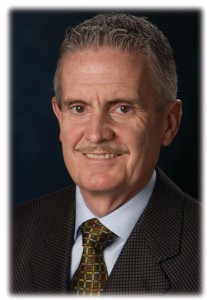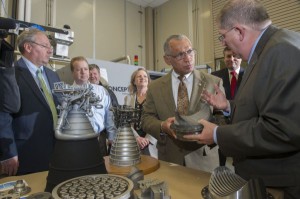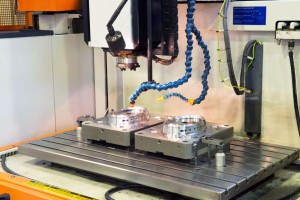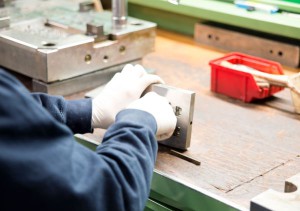Dave Tilstone succeeds the Italian Fausto Romagnani at the helm of the primary world association of mould and die makers. Mould&Die Magazine interviewed him immediately after his appointment, occurred last March at Cape Town – South Africa – at the yearly conference of the Body. To understand what Istma is going to do to support the mould and die sector.
 The United States Dave Tilstone is the new president of Istma World, International Special Tooling and Machining Association, the association joined by the major associative realities of mould and die makers worldwide. At the international conference in Cape Town, South Africa, held last March, he was unanimously elected for the 2014-2016 triennium. He succeeds the Italian Fausto Romagnani, owner of the homonymous Romagnani stampi srl, who managed the association from 2011 to the end of 2013, and as regent until the convention in the legislative South African capital. Mould&Die Magazine interviewed him immediately after his election. To know what direction he intends to impress to the association, concerning the long economic crisis in course, what are the production and market sectors on which the mould and die making industry should focus to withstand rising Countries’ competition.
The United States Dave Tilstone is the new president of Istma World, International Special Tooling and Machining Association, the association joined by the major associative realities of mould and die makers worldwide. At the international conference in Cape Town, South Africa, held last March, he was unanimously elected for the 2014-2016 triennium. He succeeds the Italian Fausto Romagnani, owner of the homonymous Romagnani stampi srl, who managed the association from 2011 to the end of 2013, and as regent until the convention in the legislative South African capital. Mould&Die Magazine interviewed him immediately after his election. To know what direction he intends to impress to the association, concerning the long economic crisis in course, what are the production and market sectors on which the mould and die making industry should focus to withstand rising Countries’ competition.
President Tilstone, what boost are you going to give to the association life?
Our agenda, for the first year, provides for the organization of a strategic-economic plan, with the collaboration of all, to be used as road map for our industrial future. Over the years, Istma members have partly changed but they have especially grown and, concerning this, first of all we must decide what services we intend to develop for our partners. The target is to make them stronger and more competitive, in the meantime succeeding in attracting more and more new participants to widen and to enrich the internal dialogue.
From your international observatory, what do you deem the mandatory strategies of mould and die manufacturers?
Our companies need more technology to remain competitive on an increasingly aggressive market: to this end, it is necessary to address resources to this specific business area. To do that, however, we also need a bigger numbers of interlocutors that, through workshops about the new and more sophisticated technologies developed in our sector, educate our members to enhance the quality and the efficiency of their machines and of their moulding and forming processes. Only supplying our partners with commercial products that are fruit of the best technology developed by scientists, we will be able to face the competitors from rising Countries, like China and Korea, reducing costs and improving the quality and quantity of our production.
 In your opinion, in what ambits of the business life is it necessary to invest more?
In your opinion, in what ambits of the business life is it necessary to invest more?
In education, first of all: 78% of our American members of Ntma (National tooling and machining association, the American division of Istma, editor’s note), provide for a significant budget to train skilled work force. Attracting and training youth in America is considered a priority target. For this reason, inside Ntma, we have decided to spend more money to widen on-line apprenticeship programmes. Now we are going to allocate more money to improve the image of the manufacturing activity in the opinion of youth and not: many parents, but also several of their sons, still believe that working in the mould and die industry is a dirty and dangerous job. We intend to correct these old stereotypes that in 2014 are no longer justified.
You have taken part in Istma World for several years: what are the advantages, for a company, of being part of a confederation of its category?
The members of the association benefit from the possibility of discussing and exchanging precious information with their foreign colleagues. They can face the market challenges with common actions or collaborations. They acquire the knowledge of the best production practices experimented in other Countries and they can therefore put in practice those aspects allowing the improvement of their industrial reality. Besides, we have assessed with certainty that associated companies become more dynamic and enterprising and obtain higher profits than those that do not join it.
Mould and die makers’ reluctance to join the association is motivated by their managers with the lack of time. How is it possible to overcome this hindrance?
First of all, Istma does not organize only international meetings but also local networks, which need minor time consuming. In the future, we will avail more and more of modern communication systems, like teleconferences, but it is basically necessary to understand that the participation in common events is not a waste of time but added value, to be transferred into the activity of one’s own workshop, implementing it with the best operational solutions that only the experience of those that have applied them can certify as such. Therefore, it is on the occasion of these workshops that it is possible to know whether a technology, theoretically presented as awarding, proves to be really that also in its concrete efficiency on a large scale.
 The industry of mould and die makers, even if living a better situation than other productive sectors, is still affected by a long and suffered economic recession. What are, in your opinion, the fields that are better reacting on the market?
The industry of mould and die makers, even if living a better situation than other productive sectors, is still affected by a long and suffered economic recession. What are, in your opinion, the fields that are better reacting on the market?
Automotive and household appliance industry represent a certainty but recently, especially in the United States, aerospace has grown considerably. In general, I believe that packaging will always remain central for the complete industrial production chain and will be able to withstand the economic situation also thanks to the use of lighter and lighter materials that allow reducing transport costs.
The American one, from which you come, is one of the major markets and production centres and, for this reason, it is a good barometer to understand the future trends of other Countries: what are the outstanding sectors in USA and the international dynamics that you notice?
The entire United States economy is growing. In our field, together with the biomedical and telecommunication industry, the driving sector is the above-mentioned aerospace ambit: the majority of aircrafts are manufactured in the United States and in Europe, by Boing and Airbus respectively, for this reason our Country, like your Continent, finds a fertile market in this ambit. Another phenomenon that we notice in USA is the expansion of the automotive companies coming from Asia and Europe, with the enlargement of new plants or the construction of new ones, fact that your mould and die makers, and in general all those joining Istma, should take into account because they are realities that are likely to become more and more potential buyers of the automotive sector.
Are there in your Country some partnerships between mould and die manufacturers and technological research and development institutes?
The scientific research that has a direct impact on the production is called by us Additive Manufacturing (AM). In USA universities, technology suppliers and industries collaborate to maximise the productive benefits of this scientific research. The AM, for instance, has permitted to implement complex components or pieces with titanium or other materials not easily treated in terms of flexibility; it has allowed producing sand castings accelerating the product development cycle; it has offered optimal solutions to comply with the cooling rules in the machining cycle that otherwise would not have been possible.
Besides, in the United States some State Governments, like Ohio’s (Midwest), have funded an Additive manufacturing plant that groups together industry, academic world, equipment producers, suppliers and end users. It is called America Makes and I think that it can offer a representative example of how several different subjects (institutions, academies, industries, laboratories etc …) can collaborate for a common target.
What are the most interesting forms of collaboration in USA?
Ntma operates in concert with Amt, The Association for Manufacturing Technology and Pma, Precision Metalforming Association in a three-member consortium called One Voice. Together we have just realized the fourth yearly meeting that gathers over 700 members of each association. Besides, we collaborate with Nims, National Institute of Metalworking skills, created in 1995 to keep high the competitiveness of the American labour, whose attendance offers also credits to the students interested in operating in this sector in the future.
What is the situation of the access to credit in USA?
In recent years we have suffered a credit crunch owing to the big recession, nevertheless today the situation has notably improved and mould and die makers enjoy better credit lines and then liquidity for their investments. Interest rates have slightly increased over the last few months but they are anyway still close to their all-time lows.
 Another crucial point is the generational succession at the helm of companies. How does the passing of baton occur in your Country?
Another crucial point is the generational succession at the helm of companies. How does the passing of baton occur in your Country?
In this ambit the United States are not experiencing a very different situation from the Italian and European one in general. Business managers, who were also the company’s founders in some cases, even when they get old, are reluctant to entrust the management of enterprises to their sons.
Another problem felt by many mould and die makers in several Countries is the difficulty to find specialized personnel. What is the situation at you?
As shortly explained in one of the first answers, in USA we have launched an on-line programme, nowadays widely known, with which we help our members to educate their employees about the necessary competences for the development of their industry. Investing a lot in training, and then facing the problems at the root, we avoid losing time, money and energies later on, in the search for adequate personnel when the company expands or must replace workers who retire. Operating like that, the turnover problem actually does not exist by us.
Besides, we have a specific programme for small and very small companies, since we send experts to talk with the single members of the family to illustrate them how to develop their business at best.
The new international board
After the triennium of the Italian Fausto Romagnani (2011/2013), regent until last March 12th, the American Tilstone will act as Chairman of Istma in the 2014/2016 triennium. The Finnish Jari Saaranen has been elected his vice. All non-European the new members of the board of directors: the South African Bob Williamson, the Brazilian Christian Dihlmann and the Argentine Juan Molina. The secretary of the association will be instead elected in Portugal by Cefamol, The Portuguese Mould-makers Industry Association.
The former appointments of the neo-president
Since 2010 Dave Tilstone has been president of Ntma, National tooling and machining association, the United States division of Istma World. Composed by about 1,400 members, mainly private small and medium-size companies, on the whole it represents more than 40 billion dollars of sales in the United States in precision mechanics. Its members operate in several strategic sectors of the American economy, including aerospace, automotive, medical, oil and gas. Ntma is in the forefront in facing the matters of the skilled work for USA producers and has identified the development of the labour force as one of its main organizational interventions. Its organizational efforts to promote production careers include the National Robotics League, which is part of the Stem programme, created to forge partnerships between students of all levels, educators and Ntma associated companies, and an on-line apprenticeship programme entitled Ntma-U. Tilstone is also member of the Board of Trustees of Pittsburgh University, in Pennsylvania, northeast of the States. He was previously manager of Kennametal Extrude Hone, multinational producer of precision metal cutting machines, ambit of which he is also advisor.
All mould and die makers in the world
Like every year, after the first operational quarter, they have realized Istma statistical year book 2014. Reached its sixth edition, it is a volume that – in over 400 pages and 900 images, graphs, statistics and numerical tables – represents a real encyclopaedia of mould and die manufacturers. The book analyses the economic trend and the sector dynamics thanks to the last fully available data, concerning the 2012 year. Starting from this year it adds also two new Countries to the statistical-economic survey: Poland and Austria. For further information, please write to: secretariat@istma.org


